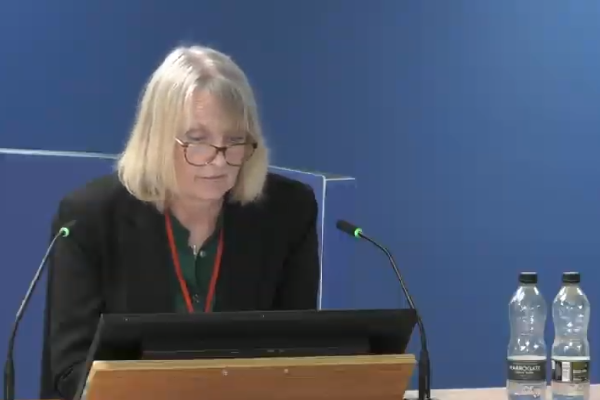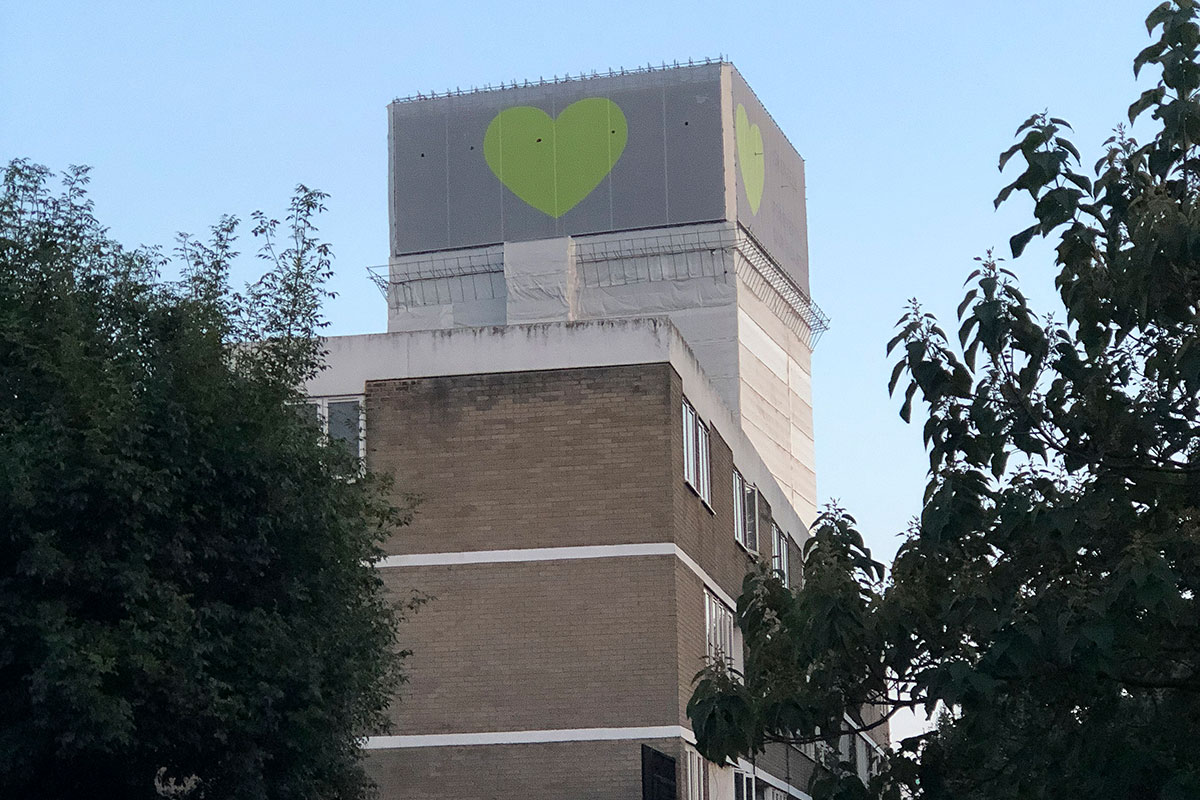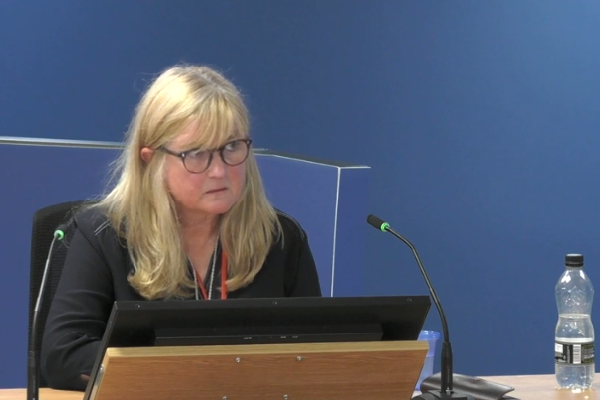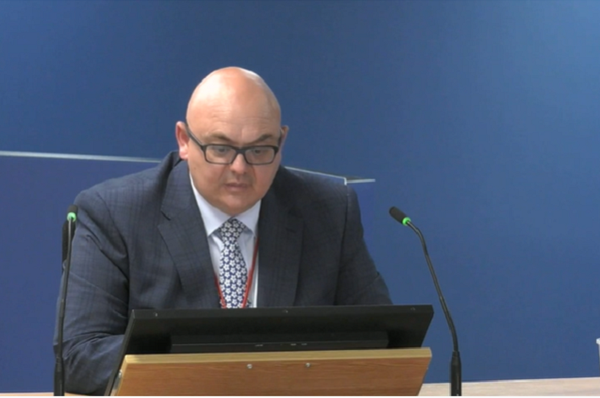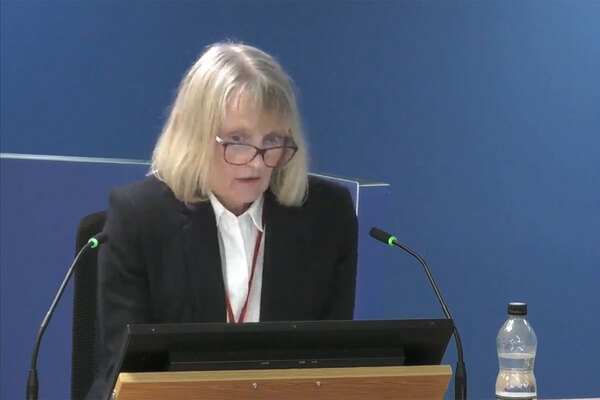KCTMO did not prepare evacuation plans despite being asked about blind Grenfell resident by firefighters in 2016
The head of health and safety at the organisation managing Grenfell Tower did not question repeat statements in fire risk assessments suggesting no residents needed help evacuating despite being notified about a blind man on the 11th floor by firefighters in 2016.
The failure of Kensington and Chelsea Tenant Management Organisation (KCTMO) to provide ‘personal emergency evacuation plans’ (PEEPs) to disabled residents has been a major focus of this section of the Grenfell Tower Inquiry.
Today, Janice Wray was shown risk assessments for Grenfell and at least five other blocks where the assessor Carl Stokes had copied and pasted the same statement suggesting no residents needed help evacuating.
Ms Wray did not question this, despite an email from February 2016 which showed that firefighters had raised specific concerns about Elpidio Bonifacio, a pensioner who lived on the 11th floor and was registered blind.
Mr Bonifacio would become the last resident to be rescued from the tower in the fire on 14 June 2017, escaping the building with the assistance of firefighters at 8.07am, after images of him trapped in the stricken building were broadcast around the world.
The email, sent by Charles Batterbee, one of the first firefighters to enter the tower during the fire, said he had spoken to Mr Bonifacio and was concerned by tin foil apparently covering his smoke alarm.
“Did you consider whether to contact Mr Bonifacio to offer him assessment for a PEEP?” asked counsel to the inquiry Richard Millett.
“I should have done,” said Ms Wray.
“Do you know why you didn’t?” asked Mr Millett.
“I don’t know,” she replied.
She had previously been shown several risk assessments prepared by Carl Stokes, the former firefighter engaged by KCTMO to produce risk assessments, which all contained the same statement covering residents with disabilities.
Mr Stokes had ticked a box saying the buildings he was assessing were “provided with reasonable arrangements for means of escape of disabled people”.
In a comments box he wrote that “there was no evidence of any resident within the premises who suffers from sensory impairment that would prevent them hearing a shouted warning of fire”, adding that KCTMO had “recently introduced a comprehensive programme to gathering [sic] about tenants including any disabilities”.
This statement – with very minor changes – was repeated across risk assessments on Grenfell Tower for six years and at least five other towers in KCTMO’s stock, despite Mr Stokes having actually prepared a PEEP for residents living in two of them, the only PEEPs he ever prepared for KCTMO.
Asked if this “mantra-like statement” was “cut and paste, no change, one size fits all”, Ms Wray replied: “As it appears.”
“It looks from this that Carl Stokes was not provided with any up-to-date information about the presence of vulnerable people in any of these properties, even in respect of the two properties where we know that two persons had PEEPs prepared for them,” said Mr Millett. “How can you account for that state of affairs?”
“I was relying on my housing colleagues to refer people to me,” responded Ms Wray. “And when we received that information we would investigate… Ultimately if they needed a PEEP then a PEEP would have been drafted. But as I’ve said we were constrained by not being able to provide any physical assistance [due to not having staff on site].”
Asked if she had agreed with Mr Stokes “not to record disabled persons in his [fire risk assessments]”, she said no.
She was also asked about an email exchange from December 2012, which emerged last week, in which Mr Stokes had advised her to “say you have nobody” when the fire brigade asked for some examples of vulnerable residents living in high rises.
He said this was because “if you identify anybody now questions like why were they not in the building’s [risk assessment] spring to mind”.
Asked about this email Ms Wray said it “seems a bit bizarre”.
“Well it’s a bit more than that, isn’t it,” Mr Millett said. “He’s suggesting that you tell the LFB a lie.”
“Yeah, but he should know me well enough to know that I would never do that,” she said.
She claimed to have had a telephone conversation with Mr Stokes in which she explained that his suggested approach was inappropriate.
In his evidence last week, Mr Stokes denied that he was encouraging Ms Wray to lie and had said that he simply believed there were no residents who met the LFB’s criteria.
Ms Wray told the inquiry that she had followed government-endorsed advice to the housing sector that said it was “usually unrealistic” to expect housing providers to create PEEPs.
This guidance has this week been republished by the Home Office, with the section on PEEPs now greyed out and subject to a caveat.
Earlier, Ms Wray was asked about KCTMO’s failure to create general emergency plans for its buildings, as required by several pieces of government guidance.
Doing so was also suggested by an independent review of the organisation’s fire safety management in 2009.
But all it produced was an organisation-wide one, which included a section on Grenfell Tower that had major errors – including the number of flats in the building – and did not meet the requirements of guidance.
“Not to put too fine a point on it, Ms Wray, this document was not only never updated [following the refurbishment of the tower] but woefully inadequate?” said Mr Millett.
Ms Wray accepted this.
She was also asked about two fires at other blocks – Adair Tower in 2016 and Trellick Tower in 2017 – where partial or full evacuation of residents was required.
“You knew that by June 2017 abandoning stay put was not Never Never Land but sometimes happened and had happened to you twice?” said Mr Millett.
“Yes, I think everybody knows that,” she replied.
She said she believed arranging an evacuation of a tower block would be the responsibility of the LFB.
The inquiry continues with further evidence from Ms Wray tomorrow.
Sign up for our weekly Grenfell Inquiry newsletter
Each week we send out a newsletter rounding up the key news from the Grenfell Inquiry, along with the headlines from the week
Already have an account? Click here to manage your newsletters
